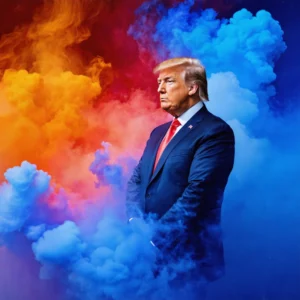
Introduction: A Shifting Fiscal Landscape
In recent weeks, congressional Republicans have introduced a strategy that disguises the true fiscal impact of extending Trump’s 2017 tax cuts. They adjust the budget baseline, thereby obscuring the real costs associated with these measures. Consequently, voters often remain unaware of the looming deficits. Moreover, as political debates intensify, analysts and economists insist that transparency remains essential to govern fiscal policy properly. Thus, understanding the details behind these baseline changes becomes critical for anyone interested in tax policy and economic stability. Additionally, policymakers now face questions regarding long-term sustainability and the consequences of these manipulations.
Historical Background and Policy Context
Trump’s 2017 Tax Cuts: An Overview
Trump’s 2017 tax cuts promised relief for businesses and individuals alike. The reductions in corporate tax rates and changes in income tax brackets initially appeared beneficial. However, careful scrutiny reveals that the fiscal costs could dramatically increase the national debt over time. Furthermore, critics emphasize that shifting spending priorities may worsen economic inequality. Analysts clearly describe the changes as a double-edged sword; they stimulate growth in the short term while risking long-term fiscal instability.
Baseline Adjustments: A Tool for Concealment
Legislators now adjust the budget baseline to incorporate lower spending estimates under the current administration. In doing so, they create an illusion that the tax cuts come at no cost. Instead, a closer look reveals that these modifications hide burdens that future generations will likely shoulder. In this context, baseline shifts serve several functions:
- They obscure the true yearly costs of tax reforms.
- They make fiscal adjustments seem neutral in the current economic cycle.
- They mislead public opinion regarding overall economic health.
Moreover, these adjustments raise fundamental questions about accountability and governance in a system where numbers often disguise political choices.
The Economic Implications of Hidden Costs
Short-Term Gains vs. Long-Term Risks
Many supporters argue that tax cuts generate immediate economic benefits such as increased consumer spending and job creation. In reality, the shifting budget baseline merely delays the reckoning of these fiscal costs. Accordingly, while tax cuts boost short-term growth, they set the stage for significant long-term challenges. For example:
- Deficits may balloon beyond manageable levels.
- Future interest rates could rise, affecting borrowing costs.
- Public investment may face cuts to cover unforeseen expenses.
Furthermore, several economic models suggest that unresolved fiscal deficits might trigger a chain reaction in the economy, leading to higher inflation and weakened investor confidence. Therefore, transparent measurement of tax cut costs remains vital for maintaining economic balance.
Analyzing the Broader Fiscal Picture
To elucidate the matter, consider the following table outlining key fiscal indicators before and after the baseline modifications:
| Indicator | Before Baseline Change | After Baseline Change |
|---|---|---|
| Total Projected Deficit | $1.2 trillion | $900 billion |
| Estimated Cost of Tax Cuts | $500 billion | $700 billion |
| Debt-to-GDP Ratio | 105% | 120% |
This table highlights how revisions conceal increasing liabilities. Transitioning from one fiscal scenario to another not only impacts budgeting decisions but also determines the future economic trajectory.
Political Strategies and Public Perception
Narrative Control and Communication
Republican leaders skilfully frame the tax cut debate as a matter of immediate economic recovery. They assert that maintaining lower taxes provides incentives for businesses to invest and hire. Meanwhile, by controlling the narrative, they divert attention from the accumulating fiscal risks. Furthermore, they employ media channels with persuasive rhetoric to validate their perspective. As a result, the public often perceives the tax cuts as fiscally neutral. However, investigative journalists and independent watchdogs frequently challenge this portrayal by emphasizing the hidden costs masked behind statistical revisions.
Media, Misinformation, and Voter Impact
The media now plays a critical role in deciphering budget documents and fiscal reports. Journalists must use accessible language to describe complex fiscal manipulations. In this scenario, transparency becomes paramount because misinformation can easily sway public opinion. Consequently, several noteworthy trends emerge:
- Major news outlets frequently analyze fiscal policies from multiple angles.
- Fact-checking bodies continue to document misleading fiscal claims.
- Online platforms offer debates that juxtapose partisan viewpoints.
Moreover, voters increasingly demand that policymakers explain how these fiscal strategies affect real-world outcomes. Ultimately, clear communication might help bridge the gap between political rhetoric and economic reality.
Implications for Future Policy and Governance
Long-Term Fiscal Health and Generational Impact
Future generations could inherit a fiscal environment characterized by rising deficits and mounting debt. Policymakers must, therefore, adopt measures that restore accountability. For example, several proposals include:
- Revisiting baseline adjustment methodologies with bipartisan oversight.
- Implementing independent audits of projected fiscal outcomes.
- Increasing transparency in budget revisions and tax reform decisions.
Moreover, these reforms aim to align short-term policy benefits with sustainable long-term growth. While Republicans defend the tax cuts as essential for economic growth, critics argue that masked costs pave the way for dynamic fiscal crises.
Policy Reforms and Legislative Oversight
Legislators now encounter increasing pressure from both independent auditors and constituents. Several reform proposals come with diverse measures, including:
- Establishing an independent fiscal office to validate long-term cost estimates.
- Enforcing stricter reporting standards for budget revisions.
- Creating public forums that encourage debates on fiscal transparency.
Notably, political analysts indicate that these changes could restore trust and reduce partisan manipulation. In addition, moderating the influence of political narrations on fiscal policies supports a more balanced approach to governance.
Conclusion: The Path Forward
Throughout this detailed exploration, fiscal transparency emerges as a central theme. Republicans’ changes to the budget baseline serve multiple political functions while casting long shadows over future economic stability. Consequently, experts insist that policymakers must confront these hidden costs openly. Additionally, voters and media professionals alike play crucial roles in demanding accountability. In summary, transitioning away from concealed fiscal narratives might help balance short-term benefits against long-term responsibilities. Thus, the question remains: Can reformers establish a system that values genuine fiscal integrity over political expediency? Undoubtedly, robust dialogue and nonpartisan reforms represent necessary steps ahead.
Supplementary Analysis: Frequently Asked Questions
What motivates baseline adjustments?
Lawmakers adjust budgets to manage political narratives and delay fiscal reckonings. They prioritize immediate economic optics over long-term debt implications.
How do these changes impact public trust?
Voters risk losing confidence in governance when fiscal realities do not match public explanations. Therefore, increased oversight can help rebuild trust.
What steps can safeguard future fiscal policy?
Implementation of independent audits, transparent reporting, and bipartisan cooperation offers a practical way forward. In conclusion, the path forward remains clear: enhanced accountability drives better policy-making and secure fiscal futures.




